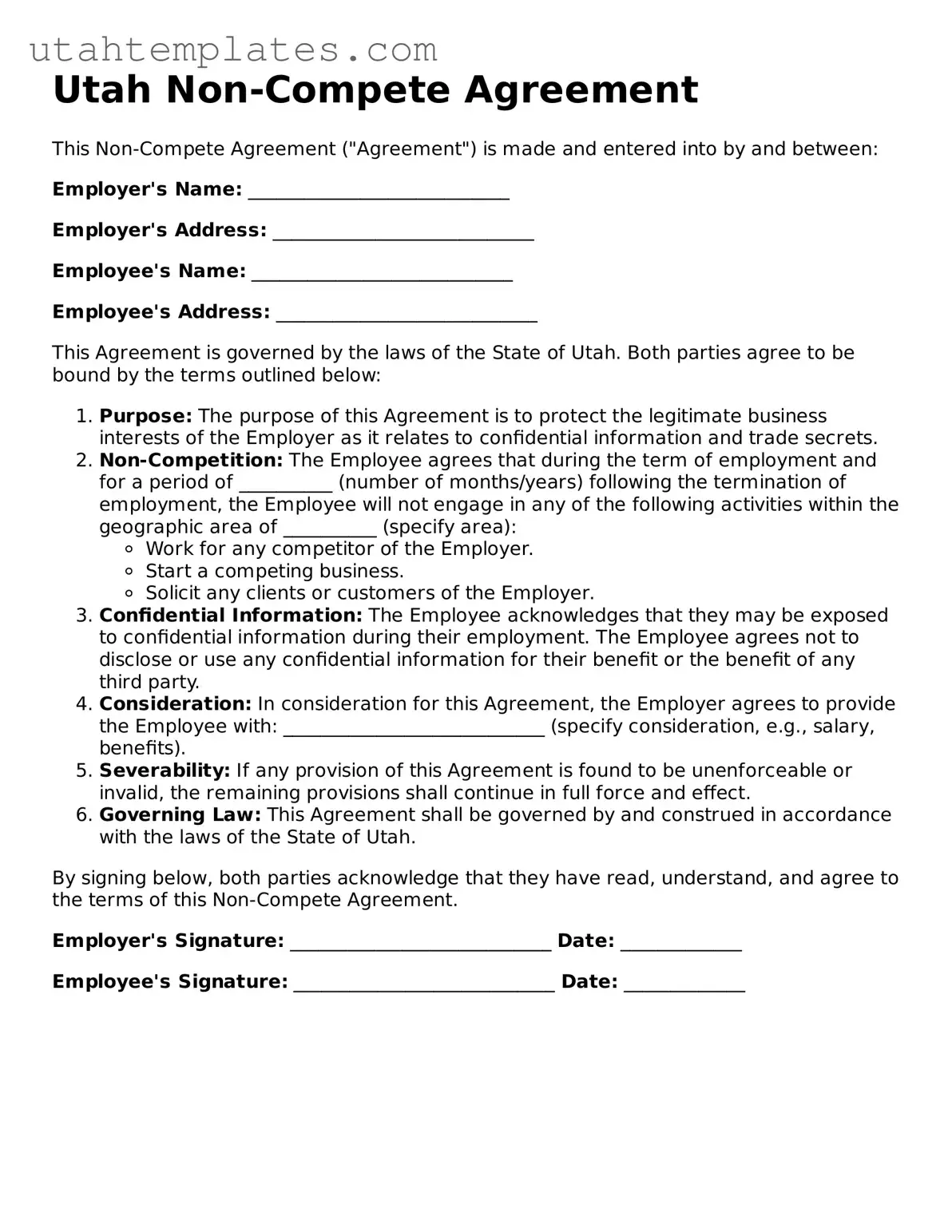Filling out a Non-compete Agreement form in Utah can be a straightforward process, but many individuals make common mistakes that can lead to complications down the line. Understanding these pitfalls can help ensure that the agreement is filled out correctly and serves its intended purpose.
One frequent mistake is failing to read the entire agreement before signing. It’s essential to understand the terms and conditions outlined in the document. Skimming through the text can lead to misunderstandings about what you are agreeing to, potentially restricting your future employment opportunities more than you anticipated.
Another common error is not specifying the duration of the non-compete. The agreement should clearly state how long the restrictions will be in effect. Without a defined time frame, the terms may seem vague, which could lead to disputes later on. A well-defined duration helps both parties understand the limits of the agreement.
Some individuals also overlook the importance of defining the geographic scope of the non-compete. It’s crucial to specify where the restrictions apply. A non-compete that covers an overly broad area may be deemed unenforceable, so clarity is key. Think about where you plan to work in the future and ensure that the agreement reflects that.
Additionally, neglecting to discuss the agreement with an employer or legal advisor can be a significant oversight. Open communication can clarify expectations and help prevent misunderstandings. Seeking professional advice can also provide insights into how the agreement aligns with state laws and your career goals.
Another mistake is not considering the industry in which you work. Different sectors may have varying norms regarding non-compete agreements. Make sure the terms are reasonable and align with industry standards. An overly restrictive agreement may not hold up in court and could limit your professional growth.
Some people forget to include any necessary exceptions that could benefit them. For instance, if you plan to start a business in a related field, it’s wise to outline any exceptions in the agreement. This foresight can prevent future conflicts and allow for greater flexibility in your career.
Moreover, failing to keep a copy of the signed agreement can lead to complications later. Always ensure you have a copy for your records. This document serves as a reference point should any disputes arise, providing clarity on what was agreed upon.
Another mistake is not being aware of state-specific laws regarding non-compete agreements. Utah has specific regulations that govern these contracts, and being uninformed can lead to unenforceable agreements. Familiarizing yourself with these laws can help you navigate the process more effectively.
Lastly, underestimating the importance of negotiation can be a critical error. If you feel that certain terms are too restrictive, don’t hesitate to negotiate. It’s a common practice, and many employers are open to discussions that lead to a mutually beneficial agreement.
By being aware of these common mistakes, individuals can approach the Utah Non-compete Agreement form with greater confidence and clarity. Taking the time to understand the document, its implications, and how it fits into your career can lead to better outcomes in the long run.
